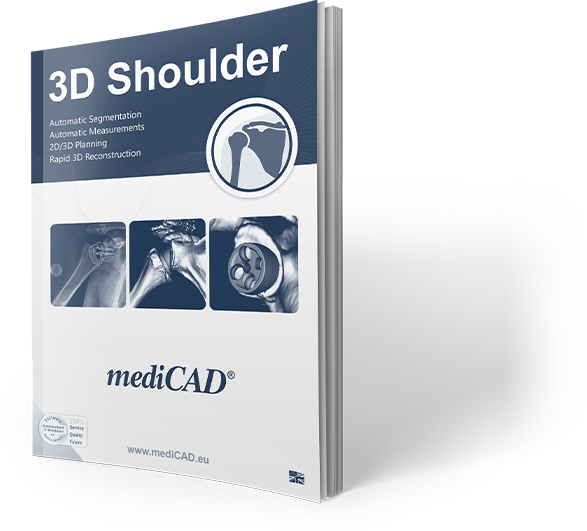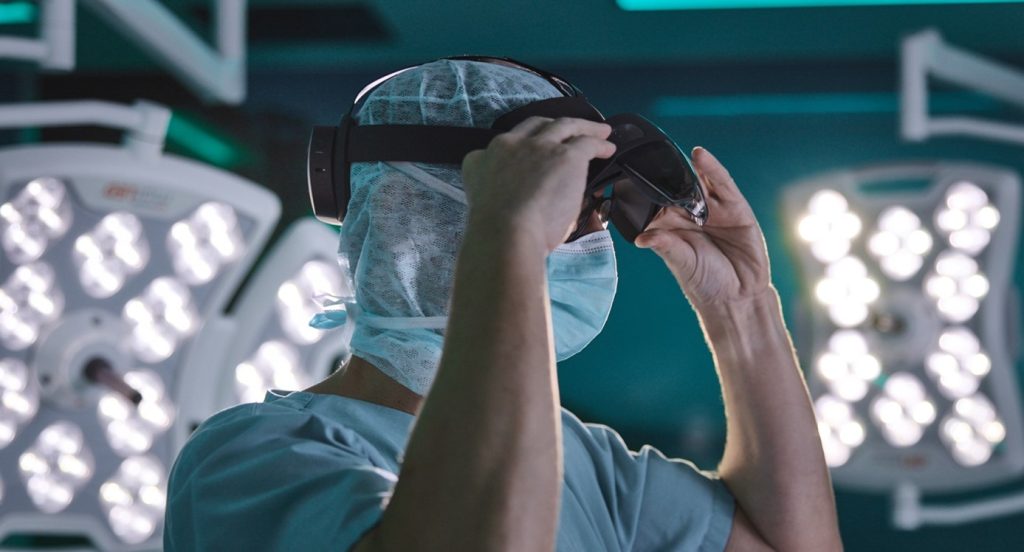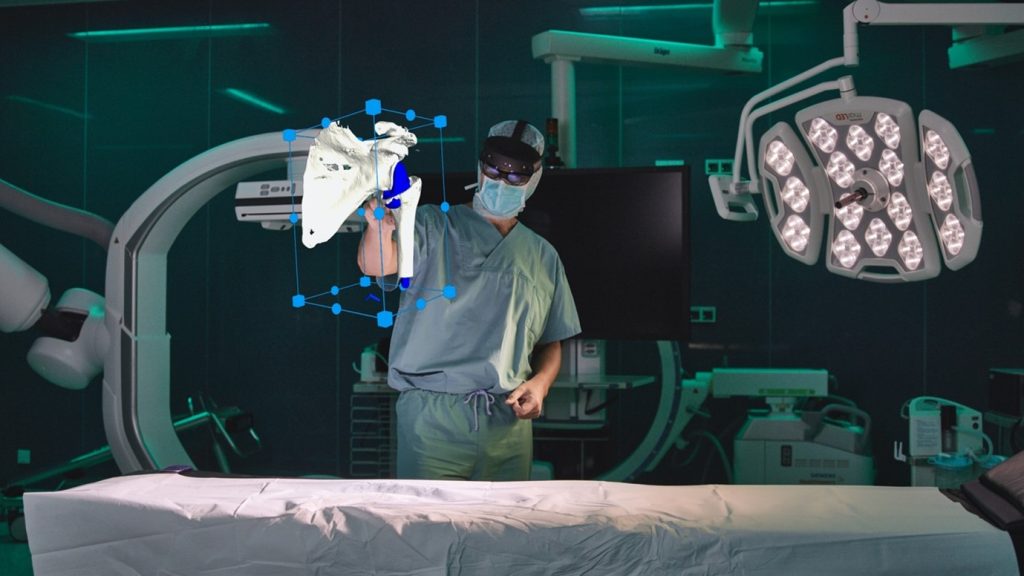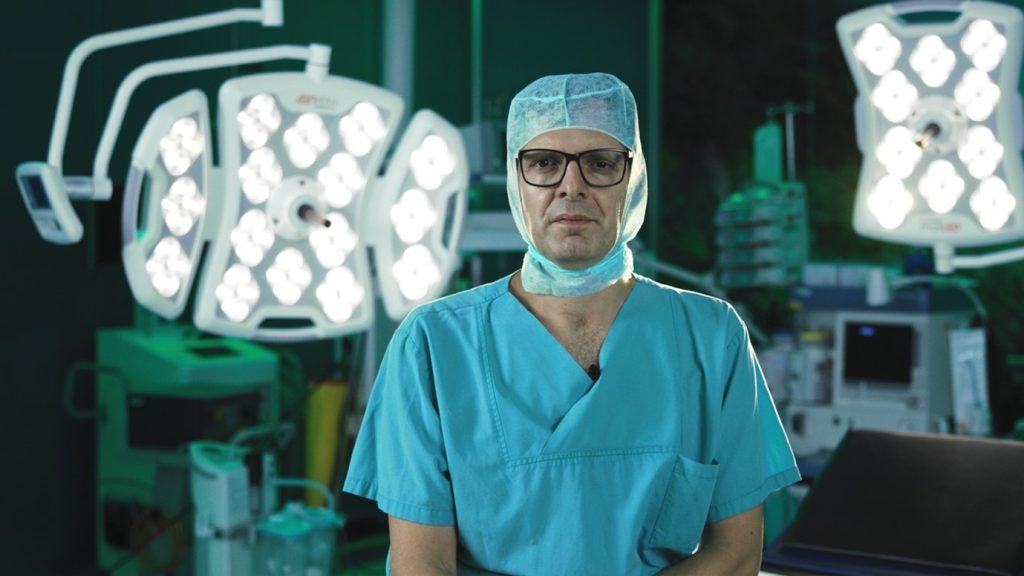



Lorem ipsum dolor sit amet, consetetur sadipscing elitr, sed diam nonumy eirmod tempor invidunt ut labore et dolore magna aliquyam erat, sed diam voluptua. At vero eos et accusam et justo duo dolores et

Veröffentlicht am, 17.08.2022

The planning of surgical procedures is playing an increasingly important role in orthopedic surgery, especially in complex pathologies. New technologies are also providing more and more ways to help surgeons do this, making surgeries safer while saving time and money. mediCAD has developed 3D surgical planning modules to enable the planning of even complex cases. These can be used to create a 3D image of the pathology based on a CT or MRI scan. The virtual image of the body region can then be used to perform dimensioning, simulate incisions / bone realignments, and insert implants.

There are already some preoperative options available to plan even complex cases reliably and minimise risks. What is often missing, however, is intraoperative control. Here, doctors often only have the option of printing out the planning report that has been carried out or displaying it two-dimensionally on a simple monitor. A tool is therefore needed with which the physician can compare the progress of the operation with his planning at any time and without stepping away from the patient. Ideally, the multidimensional factor of 3D planning should also be preserved, and all this without much delay or preparation time.
A new technology that has already revolutionised various industries for several years is the field of extended reality. This comprises the combination of virtual content with the real environment, whereby there are the most diverse forms of expression here. A subtype of these extended reality solutions, so-called Mixed Reality, is particularly interesting for the medical industry. In this case, the user can still fully perceive his actual environment – but it is enriched with digital content that can integrate into and interact with the actual environment as part of it.
One hardware solution that makes this possible is the Microsoft HoloLens 2, which has a transparent visor complete with 6 cameras that create a virtual image of the environment and place realistic 3D holograms within it. mediCAD has also recognised the enormous potential of this technology and is currently developing a solution that will enable physicians to take their preoperative 3D planning into the operating room and view it with the help of this HoloLens.

For surgeons, this means that they can display their 3D planning as a life-size virtual body part. This keeps the model in the same position as it is placed in space, allowing the surgeon to walk around the planned body region or rotate it to view it from all sides. It is also possible for the user to further edit the displayed elements.
Because the surgeon is located naturally in a sterile environment, the haptic operation of equipment is often difficult. mediCAD MR(Mixed Reality) offers the additional advantage of enabling control via gestures or speech, which can be operated entirely without actual physical contact.
In addition to the display of the 3D planned bone area, the user can also display 2D content and thus, for example, view a planning report with patient information, additional X-ray images, or surgical guidelines, which can be obtained either locally from a computer or from a central image archive (PACS).
mediCAD MR can also be used for educational purposes, as video and audio communication between HoloLens users and other persons in front of a PC is also possible. This means, for example, that assistant physicians or students can follow a procedure live without actually having to be present. On the other hand, the surgeon can also seek external support for particularly complex procedures.
Especially with such a disruptive technology, a variety of other possible fields of application is possible. In this case, however, it must always be carefully weighed up which functions really deliver added value for users and how these can then be implemented as intuitively as possible without neglecting the specific requirements of physicians. For mediCAD, it is vital to develop the Mixed Reality project in close collaboration with many experts from different surgical disciplines and to test it under real conditions.
It is particularly important here to strike the fine line between the greatest possible novelty and additional benefits without overburdening the user.
mediCAD benefits here from the fact that it can rely on a large network of physicians and clinics that already have many years of experience with other mediCAD® software solutions and have the most diverse requirements for the Mixed Reality solution. One of these partners is Professor Schröter, Chief Physician of Trauma and Reconstructive Surgery at the Diakonie Klinikum Jung-Stilling in Siegen.

He has served as a faculty member of the AO Technical Commission, where he contributes extensively to technical developments. He continues to be a board member of the German Knee Society. He is now trying to integrate the experience he has gained in recent years at Klinikum Jung-Stilling Siegen, where the hospital, with its modern and progressive nature, offers him ideal conditions. According to Prof. Dr. Schröter, there is no question that this technology will have a permanent place in trauma and reconstructive surgery and will play an essential role in the quality of medical care in the future. Already during his first encounter with the HoloLens in the surgical environment, he was convinced that this was the case:
„When I had the opportunity […] to look at a fracture from the inside and get a completely different view of the morphology of the fracture pattern, it was insanely fascinating to me because I got an idea of what the situation was going to look like in surgery before the surgery takes place.“
He would no longer like to miss out on the visualization of a 3D problem. He believes a key advantage of the Mixed Reality solutions is being able to access preoperative planning during surgery:
„Also, by visualising the preoperative planning during the surgical procedure,I always have the thoughts I had before the surgery in front of me and can readjust if I need to react to an unexpected situation.“
Yet, he also perceives a significant gain in the area of training for future physicians. Using the video streaming function, rare but complex interventions can be followed live or recorded from the outside. These can be made available to young colleagues afterwards and explained in detail. All of these are aspects that ultimately have a positive effect on the quality of an operation and thus on patient care, as Professor Schröter sums up:
„Now that we can use planning tools to better prepare for surgical procedures, our care is also getting better and of higher quality. Using Mixed Reality, which allows us to transfer the entire concept with planning into the operating room, we are taking the entire treatment […] to a new level.“
It is crucial for medical technology companies to actively participate in the further development of new technologies and their integration into everyday clinical practice, as this is the only way to guarantee that patients always receive the best possible care and that the medical industry is not overwhelmed by digitisation.
The solution presented here is surely only the first step in a technological process whose future potential is eagerly awaited. If you want to find more about our Mixed Reality, check the webinar by Dr. Boutsiadis here.
©Potenziale MedTech 2022 Voelker & Partner mbB